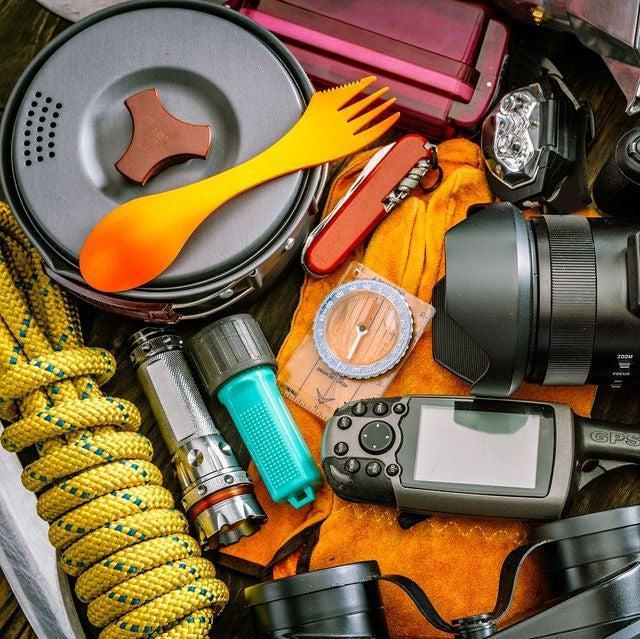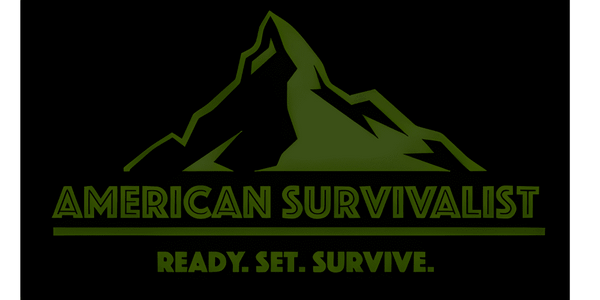
Bugging In vs. Bugging Out: How to Make the Right Call When SHTF
Share
Picture this: the lights flicker, then die. Outside, chaos reigns as sirens wail and the air thickens with panic. In this moment, you stand at a crossroads—stay in your fortified home or grab your gear and escape into the unknown. I’ve been there, and I know the weight of that decision. Sometimes I made the right call; other times, hesitation cost me dearly. When SHTF, the choice between bugging in and bugging out isn’t just tactical—it’s a fight for survival.
This isn’t a sanitized guide filled with theory; it’s a battle-worn testament drawn from nights spent in the dark woods, watching the horizon for threats, and drilling with trusted allies. Together, we’re going to delve deep into the stark realities of both strategies, so you can forge a plan that suits your environment, your loved ones, and your instincts. You can’t afford to be unprepared when disaster strikes.
Understanding Bugging In: Holding the Fort
Bugging in isn’t just a choice; it’s a declaration. You’re staking your ground, transforming your home into a stronghold against the storm. For many preppers, this is the first line of defense—and for good reason. A well-stocked, fortified home can be your safest refuge when disaster strikes.
But let’s not kid ourselves: bugging in is a strategy that demands preparation. You can’t rely on wishful thinking and a few cans of soup to see you through a blackout or civil unrest. You need a robust foundation—layers of supplies, security, and resilience. My personal setup includes:
- A three-month food supply encompassing everything from freeze-dried meals to bulk staples and home-preserved goods.
- Water stored in drums, filtered through reliable gravity systems.
- A trauma kit that rivals military standards, backed by essential medications and herbal remedies.
- Reinforced entry points, motion sensors, blackout curtains, and firearms I’ve trained with.
- A wood stove and solar generator ready to keep the home fires burning.
Security is paramount. Every system in place has a contingency, and every adult in my household is well-versed in the game plan. Your location can be a double-edged sword. Urban areas offer proximity to resources but can quickly devolve into chaos. Suburbs provide space but may lead to isolation when you need help. Rural areas can offer concealment but come with the burden of distance from aid. Know your land and prepare accordingly. Hesitation could cost you everything.
If you’re in the Sierra Nevada foothills, for example, wildfires can cut you off in hours. Along the Gulf Coast, hurricane winds and storm surge can make bugging in suicidal. In the high desert of Arizona, water scarcity is a constant enemy. Tailor your stronghold to what your region throws at you.
When Bugging Out Becomes Necessary

There are times when holding your ground is a death sentence. Wildfires rage, violent unrest sparks, or chemical spills erupt—forcing you to abandon the sanctuary of your home. Bugging out becomes a race against time, a journey toward safety that you’ve scouted in advance—whether on foot or by vehicle.
This isn’t a picturesque escape into the wilderness. It’s grueling, fraught with danger, and riddled with uncertainties. Statistics show that only 39% of Americans are prepared for emergencies. The rest? They’ll panic, clog the roads, and become liabilities instead of assets.
Your bug-out plan must be watertight. My loadout is meticulously curated—a bug-out bag filled with calorie-dense food, water filtration systems, trauma gear, shelter materials, fire-starting tools, and a trusty fixed-blade knife. Have fallback locations scouted—rural havens equipped with resources for tough times. Be ready for anything, including evacuating with your pets.
Be aware: evacuation times can triple during a crisis. I’ve sat for hours in gridlock, watching as people abandon their vehicles and flee. Looters emerge, gas stations run dry. You can’t afford to wing it; you need a plan, a backup plan, and the resolve to act decisively when the moment arrives.
In the Cascades, a volcanic event or mudslide can shut down every exit within minutes. In Florida, a fast-moving hurricane may turn highways into parking lots. If you’re in Alaska’s interior, winter temps below -40°F can turn a bug-out into a frostbitten nightmare if you’re not equipped for deep cold. Your plan must reflect your geography and season.
Bugging In vs. Bugging Out: Making the Call
Here’s the crux of survival: how do you discern when to bug in and when to bug out? The guiding principle I live by is simple—stay if it’s safe, leave if it’s not. Yet, defining “safe” in the midst of chaos requires foresight.
If your home stands strong, stocked with supplies, and shielded from immediate threats like fire or civil disorder—stay put. But if the tides turn, if violence encroaches, or if your supplies dwindle—get moving. Every second matters.
Stay connected to trusted sources of information—emergency broadcasts, HAM radio, local networks. Have multiple escape routes mapped out. I keep printed maps in both my vehicle and my bug-out bag. If the roads are blocked, I’ve plotted foot paths and terrain routes. Think ahead. Have a cache buried along the way for emergencies. Don’t let desperation dictate your choices.
In Appalachia, where dense forests can conceal your route, knowing backwoods trails can make or break your escape. In the Great Plains, where storms roll in fast and flat terrain offers no cover, shelter options must be preselected and reachable within hours. Geography isn’t just a backdrop—it’s the battlefield.
The Psychology Behind the Choice
Home often feels like the safest place in a crisis. Studies show that 68% of people instinctively cling to their familiar surroundings during emergencies. It’s human nature to seek comfort in the known. But that comfort can become your cage.
Bugging out is a mental battle. You’ll wrestle with exhaustion, fear, and the disorienting unknown. I’ve conducted 24-hour bug-out drills with my family—sleeping rough, rationing water, navigating under a starless sky. The first time, we were overwhelmed. The second time, we were a well-oiled machine. You must train your mind and body to endure stress before the real test arrives.
Geography Makes the Call for You
Your ZIP code can dictate your survival options. In densely populated cities, you’re surrounded by people—and when the lights go out, desperation spreads like wildfire. Bugging in might buy you time, but only if your defense plan is rock solid.
In rural landscapes, your only option may be to bug out if nature cuts you off or supply lines collapse. I know people who live 40 miles from the nearest hospital—self-reliance is their only mantra.
Utilize topographic maps and satellite imagery to your advantage. Understand choke points, waterways, and high ground. Build your plans around your terrain, not your preferences. Fail to adjust, and you’ll be left vulnerable.
In the flood-prone Mississippi Delta, elevation is life. In the Rockies, snowpack and avalanche risk can block your path until spring. In the drought-scorched Southwest, your nearest water source could be 15 miles away. Success hinges on knowing your region like the back of your hand.
Building Redundant, Adaptable Plans
No plan survives first contact with chaos. This truth is why your survival strategy must incorporate redundancy. I maintain two distinct kits—one for bugging in and one for bugging out. They are modular, clearly labeled, and ready to load in seconds. I’ve practiced my loadout so often that I could do it in my sleep.
Within my home, I’ve established a secure “core zone”—reinforced doors, blackout curtains, and concealed exits. My food storage isn’t just plentiful; it’s layered: short-term, mid-term, and long-term supplies, rotated quarterly. I’ve stocked hygiene supplies, communication gear, barter items, and morale boosters—because when spirits are low, a good cup of coffee can work wonders.
Community is a force multiplier. I’ve built relationships with trustworthy neighbors—individuals with valuable skills, land, and aligned values. Should I need to bug out, I have safe havens and allies who won’t draw down on me at first sight.
FAQs
How do I know when to bug out?
If your shelter becomes compromised—whether by fire, flood, or civil unrest—it’s time to move. Keep a watchful eye on emergency alerts, trust your instincts, and don’t second-guess yourself. Every moment counts.
What’s the first step in SHTF preparation?
Start by assessing your local threats, then build a basic kit that caters to both bug-in and bug-out scenarios. Aim for a 90-day supply and conduct regular drills with your household. Don’t wait until it’s too late—start building your resilience now.
Can I bug in without a lot of gear?
For short-term events, perhaps. But long-term survival without adequate food, water, security, and warmth? That’s a gamble. Start small if necessary—but start now. Every day you delay is a day lost.

Final Thoughts: It’s Not a One-Size-Fits-All Answer
There’s no one-size-fits-all solution when it comes to bugging in vs. bugging out. Every crisis is unique, and each family has distinct needs. Yet, if you cultivate layered plans, train under pressure, and maintain adaptability, you’ll have an edge when others falter.
I’ve witnessed too many people freeze in critical moments. Don’t let that be your story. Prepare today. Practice often. And when the time comes, act with clarity and determination.
For more tactical insights, gear reviews, and field-tested strategies, dive into the full library at American Survivalist. Stay vigilant. Stay prepared. And never stop honing your skills.


